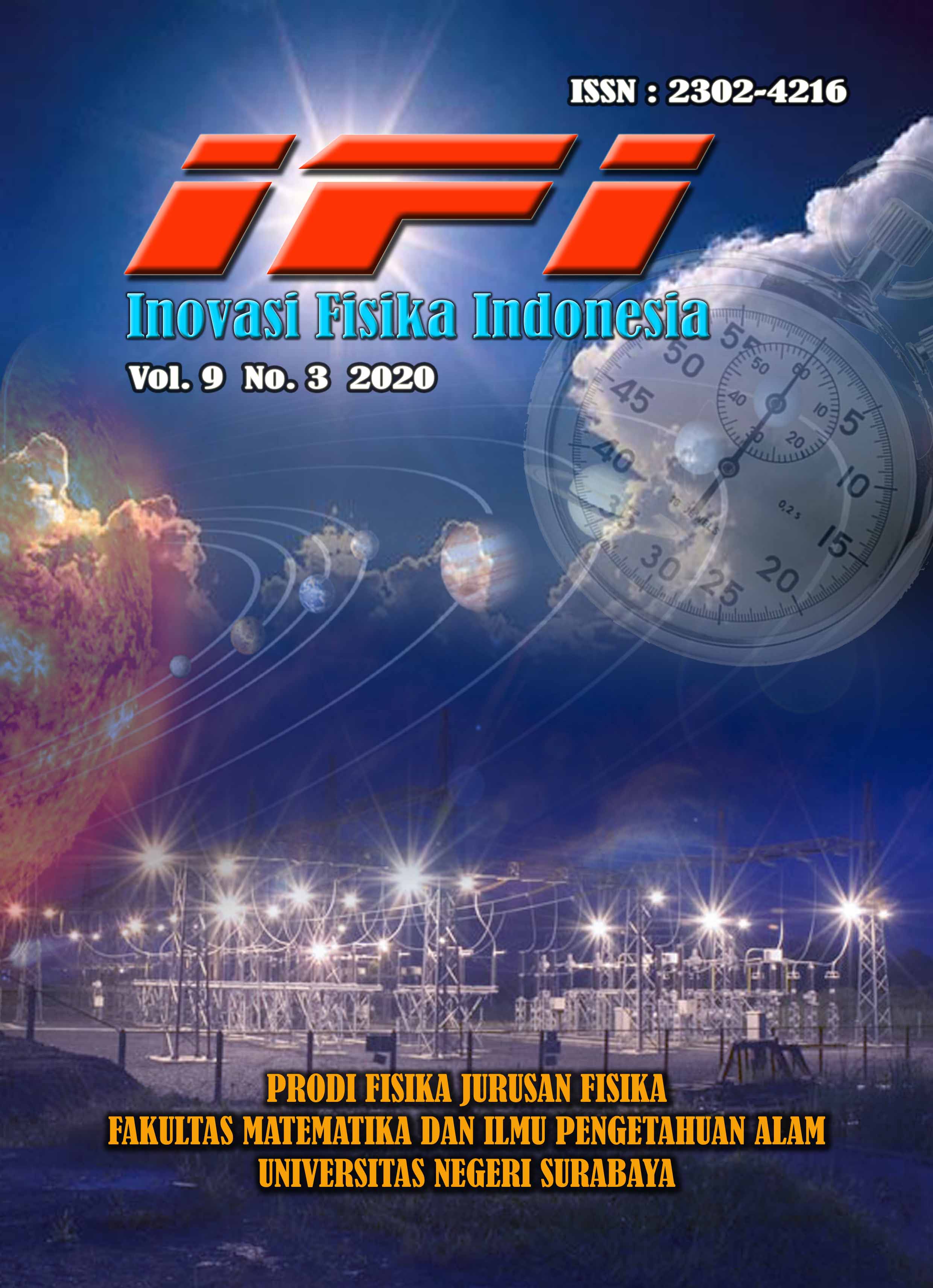DEPOSISI LAPISAN TIPIS POLIANIALIN DENGAN METODE ELEKTROKIMIA
Kata Kunci : Sintesis Polianilin, Substrat ITO, FTO, Stainless Steel, QCM, Voltameri Siklik, Elektrokimia, Potensiostatik dan Galvanostatik
DOI:
https://doi.org/10.26740/ifi.v9n3.p31-42Abstract
Dalam artikel ini bertujuan menganalisis deposisi lapisan tipis polianilin (PANi) dalam berbagai macam substrat. Misalnya seperti substrat ITO, FTO, Stainless Steel dan QCM. Metode yang dilakukan dalam beberapa penelitian yaitu metode elektrokimia yang terdiri dari metode potensiostatik dan galvanostatik. Berdasarkan hasil analisis dari sintesis PANi, keempat jenis substrat tersebut dapat disintesis lapisan tipis PANi dengan menggunakan Voltametri Siklik (CV). Analisis CV dari lapisan tipis PANi yang diendapkan pada substrat ITO menunjukkan bahwa lapisan tipis tersebut memiliki reversibilitas pewarnaan yang sangat baik dan stabilitas tinggi dalam larutan asam. Pada substrat FTO lapisan tipis tampak relatif halus dengan porositas tinggi karena jaringan kawat nano yang berhubungan. Pada substrat Stainless Steel menunjukkan bahwa terjadi pembentukan radikal anilin pada baja. Sedangkan pada substrat QCM dengan metode potensiostatik menunjukkan bahwa semakin besar potensial yang diukur, maka ketebalan film juga semakin tipis .
Kata Kunci : Sintesis Polianilin, Substrat ITO, FTO, Stainless Steel, QCM, Voltameri Siklik, Elektrokimia, Potensiostatik dan Galvanostatik
Abstract
In this article aims to analyze the deposition of polyaniline thin films (PANi) in various substrates. For example like ITO, FTO, Stainless Steel and QCM substrates.The method used in several studies is electrochemical method which consists of potentiostatic and galvanostatic methods. Based on the analysis of PANi synthesis, the four types of substrates can be synthesized PANi thin layer using Cyclic Voltametry (CV). CV analysis of the PANi thin films deposited on the ITO substrate showed that the films had excellent staining reversibility and high stability in acidic solutions. On the FTO thin layer substrate appears relatively smooth with high porosity due to the network of connected nanowires. The stainless steel substrate shows that aniline radical formation occurs in steel. Meanwhile, the QCM substrate using the potentiostatic method showed that the greater the measured potential, then the film thickness is also getting thinner..
Keywords: Polyaniline Synthesis, ITO Substrate, FTO, Stainless Steel, QCM, Cyclic Voltametry, Electrochemical, Potentiostatic and Galvanostatic.
Downloads
Downloads
Published
How to Cite
Issue
Section
 Abstract views: 802
,
Abstract views: 802
, PDF Downloads: 1831
PDF Downloads: 1831








1.png)
